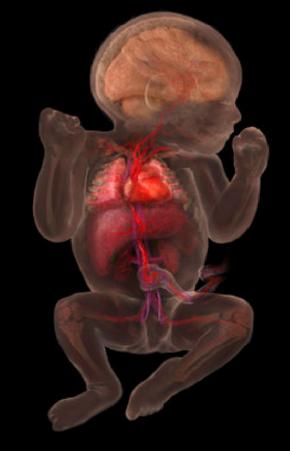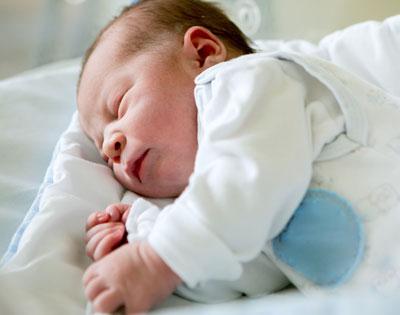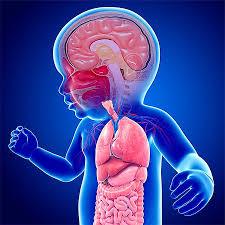
6 minute read
Cardiovascular
Fetal & Neonatal Health: Respiratory and Cardiovascular
Transition to Life After Birth
Advertisement
Suitability: Honours/PhD
Location: The Ritchie Centre, Hudson Institute of Medical Research; Level 5, Translational Research Facility, Monash Medical Centre, Clayton Project Leaders: Prof Stuart Hooper, Dr Kelly Crossley, Dr Erin McGillick Email: Kelly.crossley@hudson.org.au
Project Description: The transition to life after birth is one of the greatest physiological challenges that humans face. At birth, the airways are cleared of liquid, to allow the entry of air, which increases pulmonary blood flow and closes vascular shunts that by-pass the lungs during fetal life. Most infants smoothly make this transition, but many don’t which can be life threatening and cause life-long problems. The aim of this project is to study the changes that occur at birth and to identify factors that both facilitate and impede these changes to reduce the risks that newborn infants face.
Imaging the Entry of Air into The Lungs at Birth
Suitability: Honours/PhD
Location: The Ritchie Centre, Hudson Institute of Medical Research; Level 5, Translational Research Facility, Monash Medical Centre, Clayton Project Leaders: Prof Stuart Hooper, Dr Erin McGillick Email: erin.ncgillick@hudson.org.au
Project Description: The transition to air-breathing at birth is dependent upon airway liquid clearance which allows gas exchange to commence. This occurs smoothly in most infants, but preterm infants have difficulty in clearing their lungs of liquid. Using a synchrotron, we can image the entry of air into the lungs at birth and the simultaneous changes in blood flow to the lungs. The aim of this project is to identify factors that promote air entry into the lungs and the increase in pulmonary blood flow at birth in premature animals.
What role does the uterine environment have in cardiovascular disease?
Suitability: Honours/PhD
Location: The Ritchie Centre, Hudson Institute of Medical Research; Level 5, Translational Research Facility, Monash Medical Centre, Clayton Project Leaders: Dr Beth Allison, A/Prof Graeme Polglase, A/Prof Suzie Miller Email: beth.allison@hudson.org.au Phone: 03 8572 2488 (Dr Allison)
Project Description: Cardiovascular disease is one of the leading killers in the developed world. It is well accepted that growth restriction during gestation increases the risk of the offspring to develop cardiovascular disease as they age. Growth restriction occurs mainly through reduced placental function. The fetus adapts to the reduced placental function to maximise survival, unfortunately these adaptations impact on the development, and lifelong function of many organ systems. This project will aim to determine what impact this insult has on the cardiovascular system before and after birth, as well as in infancy. We plan to use investigate both common and novel blood pressure therapy. In this project we will be using an array of techniques including real-time PCR, histology, immunohistochemistry and image analysis.
Fetal & Neonatal Health: Respiratory and Cardiovascular
Improving breathing of preterm newborns exposed to inflammation during pregnancy
Suitability: Honours/PhD
Location: The Ritchie Centre, Hudson Institute of Medical Research; Level 5, Translational Research Facility, Monash Medical Centre, Clayton Project Leaders: A/Prof Graeme Polglase, Dr Vanesa Stojanovska Email: graeme.polglase@monash.edu and vanesa.stojanovska@hudson.org.au Phone: 03 8572 2822 (A/Prof Polglase) 03 8572 2797 (Dr Stojanovska)
Project Description: Preterm babies exposed to inflammation during pregnancy have a high incidence of breathing difficulties and brain injury, which often lead to cerebral palsy. Many of these babies will require invasive respiratory support at birth, and whilst this is life-saving, it can exacerbate the already ongoing inflammation, and worsen brain injury.
Our current research focuses on how intrauterine infection and inflammation (chorioamnionitis) affects the neural control of respiration, and whether antiinflammatory treatments can protect these nerves and improve fetal and neonatal breathing. This project involves work with small and large animal models, fetal/neonatal physiology, protein and molecular techniques, histology, immunohistochemistry and microscopy.

Suitability: Honours/PhD
Location: The Ritchie Centre, Hudson Institute of Medical Research; Level 5, Translational Research Facility, Monash Medical Centre, Clayton Project Leaders: A/Prof Graeme Polglase, Prof Stuart Hooper Email: graeme.polglase@monash.edu Phone: 03 8572 2822 (A/Prof Polglase)
Project Description: Approximately 9000 newborns die in developing countries every day because of asphyxia –30-50% die on their birthday. Approximately 13% of infants that require resuscitation at birth actually have access to the appropriate facilities to receive this life-saving intervention. There is therefore a critical need to develop simple and translatable strategies that improve the transition at birth for asphyxiated infants.
Our current research is focused on improving the transition at birth for asphyxiated preterm and term infants. This involves investigating the utility of delayed cord clamping, cord milking and improving resuscitation strategies including chest compressions delivery, with the ultimate aim of identifying strategies directly translatable to the developing world, which significantly reduces death and disability in this population. The experiments include whole-animal physiology, molecular biology and immunohistochemistry.
Fetal & Neonatal Health: Respiratory and Cardiovascular
Reducing the risk of pulmonary hypertension in infants with a congenital diaphragmatic hernia
Suitability: Honours/PhD
Location: The Ritchie Centre, Hudson Institute of Medical Research; Level 5, Translational Research Facility, Monash Medical Centre, Clayton Project Leaders: Dr Kelly Crossley, Prof Stuart Hooper, Dr Beth Allison Email: Kelly.crossley@hudson.org.au
Project Description: This project focuses on congenital diaphragmatic hernia (CDH), a birth defect characterised by a failed closure of the diaphragm, creating a continuity between the thoracic and abdominal cavities. As a result, there is displacement of abdominal organs into the chest and this limits the space for the lungs to develop in the fetus. This leads to small lungs with abnormal airways and vessels, a condition called lung hypoplasia.
Whilst in utero, lung hypoplasia is not a problem as the fetus receives oxygen via the placenta, but immediately after birth is potentially lethal. It often results in respiratory insufficiency requiring respiratory support with invasive mechanical ventilation and is complicated by persistent pulmonary hypertension of the newborn (PPHN). The latter is caused by a smaller cross-sectional area of the lung vasculature combined with raised vascular tone due to increased muscularisation of the vessels. Overall, postnatal mortality of CDH is high (30-40%) and is significantly worse when complicated with severe PPHN (up to 56%).
There is an urgent need to mitigate the effects of PPHN and improve outcomes for infants born with CDH. We believe that by optimising the transition period immediately after birth we could significantly reduce the risk of pulmonary hypertension. We propose further pre-clinical studies that will answer fundamental questions about the management of the transition period for these challenging infants.
Evaluating the outcomes of undergraduate medical and biomedical student research
Suitability: Honours
Location: The Ritchie Centre, Hudson Institute of Medical Research; Level 5, Translational Research Facility, Monash Medical Centre, Clayton Project Leaders: A/Prof Megan Wallace and A/Prof Tim Cole Email: megan.wallace@monash.edu Phone: 03 8572 2812 (A/ProfWallace)
Project Description: Undertaking a research Honours degree is widely considered to develop conceptual, strategic and critical thinking skills, analytical, presentation and communication skills, to result in published journal articles and to provide a competitive career advantage. Despite this widely held belief, there is very little definitive data to support these assumptions. A long-term outcomes survey of Honours students and supervisors will capture this information for the first time.
Aim 1. Evaluate the student learning experience and determine whether it has translated into: ongoing utilisation of critical thinking and research skills, ongoing involvement in research and attainment of higher career positions and salaries, by Monash medical and biomedical science graduates, 2, 5 and 10 years after graduating with Honours compared to Course and year-level matched graduates who did not undertake a research Honours.
Aim 2. Determine the research outputs (publications, presentations, changes to policy or practice etc) of Monash medical and biomedical science graduates 2, 5 and 10 years after graduating with BMedSc (Hons) or BMS(Hons) compared to Course and year-level matched graduates who did not undertake a research Honours year.








